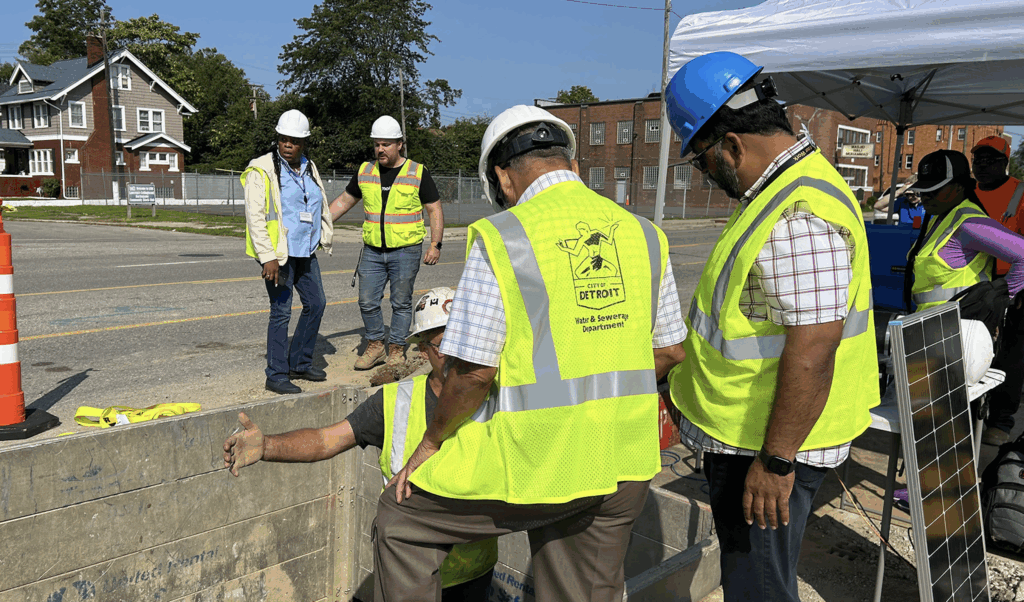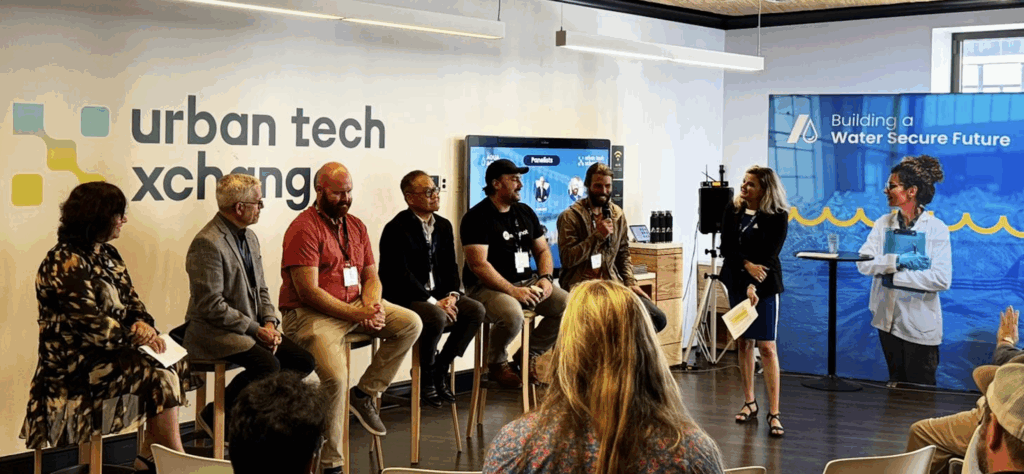Michigan-Founded Tech Company, Motmot

Aging drinking water systems are one of Southeast Michigan’s most pressing infrastructure challenges. Many pipes in the region date back to World War II, built with materials now at the end of their service life. Combined with harsh freeze-thaw cycles and decades of underinvestment, the result is frequent leaks, water main breaks, and costly emergency repairs. Motmot, a startup located in Detroit, is tackling this challenge by deploying robotic technology directly inside live water mains. By providing utilities with condition data they’ve never had before, Motmot aims to shift water infrastructure management from reactive crisis response to proactive planning. SBN Detroit interviewed Elliot Smith, the company’s CEO and Co-Founder, about Southeast Michigan’s unique vulnerabilities, the role of technology in creating more equitable water systems, and how utilities can prepare for the future of smart infrastructure. Q: From your perspective, what makes Southeast Michigan’s drinking water systems especially vulnerable? A: Southeast Michigan has some of the oldest drinking water systems in the country. Much of the pipe was placed around World War II, often using cast iron that is now at the end of its life. Add in our freeze-thaw cycles, which cause pipes to expand and contract, and the risk increases. We also have a history of underinvestment — the goal has long been to replace about 1% of the system per year, but that hasn’t happened consistently. In the Detroit metropolitan area alone, there are 13,000 to 14,000 miles of water main pipe. When one failure occurs, it can cascade into emergency work for other cities connected to the same transmission systems. Q: How does your technology change the timeline for cities and utilities — shifting from reactive maintenance to proactive decision-making? A: Traditionally, utilities only learn about problems once a water main fails. That means flooding, emergency repairs, added operational expenses, and public safety risks. What we’re fighting against is that cycle. Our technology provides data before mains fail. It’s about making the unknowns known and helping cities get ahead of the problem. Q: How do you see technology helping ensure that water system improvements are not only efficient but also equitable? A: Equity starts with visibility. Communities with fewer resources often can’t afford inspections, which means they experience more frequent issues. If we can lower the barrier to entry and make inspections affordable, every community has the chance to see what’s happening in their system. That helps mitigate risk and plan for future projects. At the same time, state revolving funds and stronger datasets can help overburdened communities secure the resources they need. Q: Where is Motmot in development today? A: We’re in the pilot stage now. We’ve kicked off our first pilot with the city of Detroit – I was especially happy that Detroit was the first city to take a chance on us. We are working through the American Water Works Association network. We already have more than 50 communities on our waiting list. That said, we’re being very intentional about not moving too fast. We want safe, effective pilots for every community we work with. My goal is to have 10 pilots started by the end of the year. Q: Beyond financial costs, what are the biggest environmental consequences of undetected water loss? A: Water loss is significant. A leak means residents are paying for water they never actually use. But it’s not just lost water — it’s wasted energy and chemicals as well. That water was treated, pumped, and disinfected before it ever leaked into the ground. In Michigan, reducing water loss directly supports our sustainability goals by conserving Great Lakes water and reducing the energy tied to treatment and pumping. Q: What do you see as the biggest hurdles to widespread adoption of smart water infrastructure? A: Risk perception is one. This is a relatively new technology, and water systems are old and often archaic. The mentality of “if it’s not broke, don’t fix it” is strong — but the truth is, much of the system is broken. We also have to prove our technology won’t contaminate systems or interfere with daily operations. And public works departments are already stretched thin. They’re chasing main breaks and doing emergency repairs, so adding another piece of technology can feel like a burden at first glance. Q: Motmot is entering a highly regulated, risk-averse sector with a disruptive idea. What lessons can other businesses learn from your approach? A: It really comes down to partnerships and credibility. We started incubating at the university level, then built credibility through the American Water Works Association. You have to build trust in the ecosystem — with regulators, utilities, and stakeholders. If you have a big idea, you can’t just drop it into the market. Plant seeds, engage stakeholders, and earn advocates who will vouch for you. Q: What do you see as the next frontier in smart water infrastructure — and how might Michigan businesses and communities prepare? A: Integration. In industries like oil and gas, systems like inspections, billing, and modeling are linked because there’s money to be made in efficiency. In the municipal space, those systems are often siloed. Breaking those silos down — connecting engineering departments, utilities, and technology platforms — is the next frontier. Michigan is well positioned to lead in this. We have a concentration of utilities, strong players like the Great Lakes Water Authority, and research universities investing heavily in this space. If we can integrate and apply technology in practical ways, not just in pilot projects, we can move from innovation theater to real-world results. Q: When you talk with water leaders across the U.S., what pain points come up most often? A: There are three that come up repeatedly. First, aging infrastructure — in some places, water mains date back to the 1840s. Second, visibility. Public works is an underappreciated industry. People see parades and fireworks, but not the crews that make daily life possible. That lack of visibility has led to chronic underinvestment. Third, affordability. This space has
AquaAction Chooses Detroit for U.S. Headquarters

Founded in Canada, AquaAction is a nonprofit dedicated to tackling freshwater challenges through innovation and entrepreneurship. Now, the organization has chosen Detroit as its U.S. headquarters — a choice made because of Southeast Michigan’s role as a steward of the Great Lakes and a launchpad for water-tech solutions with global reach. Through initiatives like the AquaHacking and AquaEntrepreneur programs, AquaAction supports young innovators as they transform ideas into real-world technologies. SBN Detroit interviewed President Soula Chronopoulos about why Detroit was selected, the challenges and opportunities facing the region, and how water-tech could shape the next phase of Southeast Michigan’s economy. Q: What makes Detroit—and Southeast Michigan overall—a compelling region for water-tech innovation and freshwater stewardship? A: There’s a powerful momentum building in Detroit. The city has long been a symbol of resilience and grit, and now it’s fueling a new wave of entrepreneurial energy unlike what we’ve seen in other regions. With freshwater and climate change in the global spotlight, Detroit and Southeast Michigan are uniquely positioned. Sixty percent of the global economy depends on freshwater, and this part of Michigan sits on some of the world’s most critical reserves. The Great Lakes hold 21% of the planet’s freshwater resources, making them both a tremendous asset and a frontline target in the fight against climate change. This region has the chance to build something extraordinary — an economy rooted in water technology that can emerge directly from the Great Lakes. Q: How does AquaAction’s presence here help address regional freshwater challenges versus other parts of North America? A: When we considered where to establish our U.S. base, Detroit quickly stood out. Why? Because this area faces some of the toughest water challenges in the country: Flooding, affordability, pollution, and the legacy of crises like Flint. At the same time, there’s an eagerness here to be part of the solution. Detroit is a real-world test bed. If solutions can work here, they can scale across the U.S. and beyond. That’s why I often say the Midwest — and Detroit in particular — has the potential to become the Silicon Valley of water tech. Q: Can you discuss examples from the AquaHacking and AquaEntrepreneur programs that have particular relevance to Southeast Michigan? A: We ran our first Great Lakes binational challenge in 2023, and the response was incredible. Over 250 people joined, 45 teams were formed, and we launched 10 companies out of Michigan and the Great Lakes region. A few examples stand out: Motmot, based at Newlab, uses underwater robotics to detect leaks in aging water infrastructure. They’ve completed more than 40 projects. Myconaut uses bioengineered mushrooms aiming to remediate contaminated soil and keep lead out of drinking water. They recently won a grant and are testing their technology right here in Michigan. Other ventures include predictive flood modeling tools for cities and digital water management systems — both highly relevant to Southeast Michigan’s infrastructure challenges. In Quebec, similar efforts helped build a $200 million water-tech economy. Imagine what’s possible here. Q: How are young entrepreneurs being supported to translate their water-tech solutions into real-world applications in this region? A: We take a different approach. First, we’re a charity, but we’re also entrepreneurs ourselves. That perspective shapes how we build support for innovators. We’ve created an ecosystem where entrepreneurs can partner with subject-matter experts to validate their solutions. We then connect them with business leaders who help refine their models, open doors, and provide mentorship. Finally, we ensure they get into the field to test and apply their work. In Michigan, we anticipate engaging over 1,000 students and innovators in the coming years. We’re also focusing on communities including those with high unemployment. Q: What are the most pressing water-related challenges Southeast Michigan must address now—and in the coming years? A: Infrastructure is the biggest challenge. Much of it is aging and in need of major investment. Beyond that, flooding, pollution, and overall water management remain pressing concerns. There’s also the question of innovation. Detroit’s history in the automotive industry raises an important question: what comes next? I believe water technology can be the next major economic driver. The region already has supply chains, industrial capacity, and expertise that can be leveraged to build a world-class water-tech sector. Q: What barriers are startups or innovators encountering when bringing solutions to market locally? A: The greatest barrier is awareness. Climate conversations often focus on carbon, while water is overlooked. Yet 60% of the global economy runs on water. It is the lifeblood of everything, but we rarely treat it that way. That said, we’re beginning to see a shift. Policymakers, business leaders, and communities are starting to recognize the true value of water — not just as an environmental concern, but as an economic and security issue. Q: With U.S. headquarters now in Detroit, what kinds of economic or social impacts do you anticipate? A: There are two main areas of impact: Jobs and community. In Canada, we’ve helped create around 400 jobs, and we expect to do the same here. Every time we run an AquaHacking or AquaEntrepreneur program, we typically launch 10–20 companies. That means new businesses, new pilot projects, and new career opportunities. We’ve committed to the MEDC that within 12–18 months, we expect up to 35 new businesses to be launched, several pilot programs to get off the ground and at least 10–12 new staff hired at our Detroit office. Equally important is the community impact. Water is a human right, and it brings people together. We’re cultivating a new generation of innovators who see water not just as a resource but as a foundation for equity, resilience, and growth. Q: How do you envision long-term freshwater security, innovation, and resilience evolving in Southeast Michigan? A: Michigan is at a turning point. Just as it once led in mobility, the state can lead in water — in quality, flood management, pollution control, and technology development. The region has the knowledge, the infrastructure, and the industrial base to


